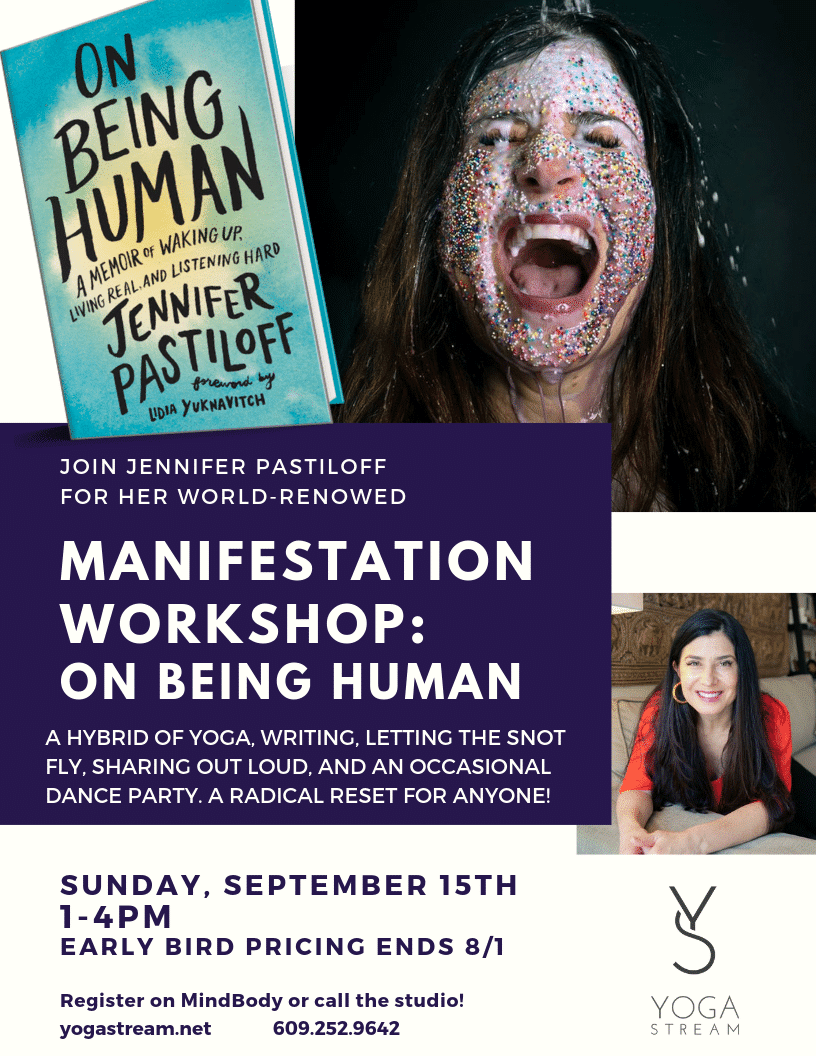By Melissa Neff
My psychology career has been devoted to helping other people learn about themselves. But when chronic back pain usurped my life, no one could tell me what was wrong with my back, or how to fix it.
As a psychologist in private practice, I divide hours into 15-minute segments, punctuated by the beep of a timer and my client’s choice of Batman or emoji stickers. A few weeks ago, I handed Jaden, an energetic and wiggly 6-year-old, a pile of putty to fidget with as we waded through an IQ test. Through a projective storytelling task, I learned what monsters were hiding under his bed, and what type of laser proton field he plans to construct to keep them out.
When Jaden’s parents return for the results, I explain, “Assessment is like pieces of a puzzle. Each test tells me something about your child.” Test by test, I plot out Jaden’s abilities relative to other kids his age on a giant white board, dotting his exceptionalities and weaknesses in purple marker. “He can solve 8th grade math equations, and he is smart enough to grasp that one day he will die; however, this thought, which most 6-year-olds can’t yet contemplate, terrifies him. So, he has constructed a laser field as a way of coping with demons that he does not yet understand.”
I inundate Jaden’s parents with labels – Gifted, ADHD, Autism Spectrum Disorder – labels which do not define him, but which describe him so we can strategize how to best help him. When Jaden’s parents leave my office, I want them to understand their child better. I want them to feel supported and validated about what they’ve always known to be true about their child, which often, no one else saw or believed. I want my clients to have answers.
Like many psychologists, I have, too, have spent some time on the other side of the couch. Like Jaden, I, too, have been plagued by anxiety. When I was still healthy, I spent nearly every day running and dancing and hiking those thoughts away until they melted into a pool of sweat at the back of my tank top.
But all of that changed six years ago, when I twisted my left foot the wrong way while shaking my booty to Rihanna during a high-intensity dance class. When my foot didn’t heal, the podiatrist shoved it in a boot for two months, which slanted my pelvis and led to a gradual stabbing in my low back that didn’t remit when the boot came off. I began to curse the Devil Spot, the dwelling inside my low back where it felt as if tiny trolls were stabbing me from the inside, punishing me for a transgression they had yet to reveal.
No matter how much stretching and resting and icing I did, the Devil Spot nagged at me, pleading to be heard like a tantruming child. Its screams grew louder and louder until they were all I could hear. Pain eclipsed my every waking moment, and suddenly, I became one of 25 million people in America with chronic pain. At work, I couldn’t stand up and talk to my clients for longer than 3 minutes. At home, it was all I could do to not toss a spatula across the kitchen, infuriated that I couldn’t stand for long enough to sauté a goddamn pan of broccoli.
I threw all of my free time and savings into rehab. I just wanted to dance again, to run again, to feel my body sherpa up and down mountainous hiking trails the way it was made to. My osteopath glided and jerked my left leg until my pelvis straightened, explaining in carpenter-speak how a normal pelvis should connect to the spine without jamming. My chiropractor jerked me back into place, asked me for my copay, and rushed me out the door. After each adjustment, I slid back into crookedness, but I kept going back for more because I didn’t know what else to do. My physical therapist urged me to try water aerobics. After about fifteen minutes doing low kicks with the 80-year-old women in my class, the Devil Spot detonated, forcing me to hobble out of the pool in tears.
Pain became the only thing I could think about. Nothing I did to stop it helped. In fact, every intervention seemed to generate more pain. The only thing everyone agreed on was that I should avoid back surgery. Failed back surgery is so common that it has its own diagnostic code.
Months passed. Years passed. For a while, I sought relief instead of fixes. I tried every type of massage –Hawaiian Lomi Lomi, deep tissue, and Rolfing. I begged Chinese doctors to poke my feet with long acupuncture needles. I asked a woman who saw angels to clear up energy from my past lives. The stabbing would relent for a day or two, but never more. So, I stopped. I stopped getting adjustments. I stopped trying to hike. I stopped at my third physical therapist. I stopped having dinner parties. I stopped getting invited to dinner parties. I stopped having sex or only had it in the dark, where I could covertly wince.
More months passed. Each day, I averaged about a 7 on the pain scale. My stomach ached from popping Ibuprofen like Tic Tacs, but I needed them to get me through the day. I hated my life. I hated my job. I hated myself. I was becoming a person I didn’t recognize, a person whose fat clothes didn’t fit, a person who got her only endorphins from Dairy Queen Oreo Blizzards. I needed answers. I needed to find someone like me, someone who would sit with my images, get out their white board, and contemplate my symptoms until they morphed into the correct diagnosis and paved a road towards treatment. I didn’t care anymore that this might mean someone drilling my spine apart, filleting me like a fish, and rebuilding me piece by piece. I was out of money and patience, controlled by something I couldn’t get under control no matter how hard I tried.
Dr. Keller, my pain doctor, agreed that it was time to consult with surgeons, who are known for their diagnostic precision.
Surgeon Number One suggested there might be a tear in my disc.
Surgeon Number Two diagnosed sacroiliac dysfunction. If he just literally could nail together my pelvis to my spine, it would become less mobile and less painful, he said.
Surgeon Number Three, the arrogant one who I was sure would break the tie, turned around slowly in his leather chair and said, “I’m not sure why you’re here. There’s nothing wrong with your back.”
“Excuse me?” I asked.
“There’s no surgery I would do on your back, because it’s totally fine.”
The tears I’d been holding back busted through, my face opening into a floodplain. “It’s fine? Then why am I in so much pain? Why does my back stab so badly that I can I barely stand, or concentrate? Why can’t I ride in a car for longer than an hour? Why can’t I get through Costco without an automated cart?”
“You just need physical therapy.”
“I’ve tried that. Three times, with three different therapists. It hasn’t worked.”
“Acupuncture can also help.”
“I’ve tried that. Twice. Didn’t work.” I breathed back the snot dripping from my nose. When he didn’t offer me a Kleenex, I wiped it away with my sleeve.
“Do you think there’s a tear in my disc?” I asked. “That I need a fusion?”
“No.” But he leaned in closer as he noticed my tears.
“You know, I’ve had some patients with similar pain. You know what helped them? Therapy. They go see a therapist, talk a little bit about their family, and in three, four months – their pain goes away.”
Clearly, this asshole had omitted reading the check-box where I’d listed my profession as “psychologist,” implying that I know something about this stuff. Had he read any of my check-boxes? Was he saying that I was crazy? That I had conjured this problem within my body as a way of dealing with my issues? Had he read the referral from Dr. Keller, who’d shot me with cortisone in my SI joint three times that year, issued me a handicapped parking pass, and sent me to this man for an actual answer?
In my car, my head fell on the steering wheel, dousing it with sobs. I wanted to call my partner to debrief, but what was the point? I was still at the same place, with no answers.
For weeks, I contemplated my choices. I insisted that my doctor perform the dangerous discogram that did, indeed, reveal a tear in my disc. I had a minor surgery to cauterize the disc. But when I started to move again, the Devil Spot ignited and raged on. I blew up balloons with my new physical therapist to pull more air into my left lung in an attempt to align both sides of my body. I let a different physical therapist put her finger in my vagina, inspecting my pelvic floor for tightness. I tried new medications. I cut down my hours at work. I forced myself to meditate. None of it helped.
Left without a clear direction, I made a radical choice: to have a surgery that wouldn’t fix the problem, but which would mask the pain. An implanted spinal cord stimulator would send soothing signals to my brain to divert it from the perception of pain. I scheduled the surgery, but my insurance required me to have a psychological evaluation first. After laughing my ass off at the irony, I drove three hours south and sat all day in a fake leather chair like the one I had for clients in my office, checking off answers on personality inventories I’d spent years administering to other people. The psychologist gave the green-light, but on the eve of my surgery, my gut rumbled with uncertainty. Scanning my brain for a last-minute fix, I recalled a conversation I’d had with a friend’s father years ago, who told me that a physiatrist, a doctor of the muscles, had saved him from back surgery. I Googled physiatrists, found Dr. Landon, who was new in town, and told Dr. Keller that I wanted one more consult before moving forward.
In his office a week later, Dr. Landon thanked me for sending him a three-page synopsis with all my provisional diagnoses and every treatment I’d tried. He’d reviewed that and my imaging the night before. He spent two hours asking me a series of rapid-fire questions to rule out all kinds of different disorders. He looked me in the eye and listened to my story. He offered me more Kleenex as I cried. He spent two hours examining my hips, pelvis, legs, and back. He told me that he had a few ideas about what might be wrong, and he labeled them all: Sacroiliac Joint Dysfunction. Pelvic Floor Dysfunction. Hip-Back Syndrome. Myofascial Pain Syndrome. He assured me that we would go down each rabbit hole, investigating symptom by symptom until I had my answers. He didn’t have a white board, but he did make a drawing on his iPad explaining how my hips might be causing back pain, which made me consider my symptoms in a new way.
Dr. Landon asked me to postpone surgery until I tried the rehab program he created for me. “I will do my very best to help you,” he said as I left, “But I can’t promise anything.”
In the safety of my car, I simultaneously grinned and sobbed, allowing child-like bawls to crawl up my chest and quake out my lips, loosening my grief like leaves on a tree that had needed a good shake to break free. Finally, I had found someone who would diagnose me with the same level of precision, empathy, and care as I did for my own clients. I always tried so hard not to cry, not to complain, not to ruin conversations by talking about my pain, but hopelessness had become a rock in my chest, hardening around my broken heart.
For the first time since the Devil Spot had made my life a living hell, I felt less alone.
Dr. Landon’s program is working. I can stand for 30 minutes instead of 3. I can do half of an old lady water aerobics class without tears. Last week, I walked into a gentle dance class and grapevined and kicked behind Dolores for ten whole minutes without stopping, and shouted with her along to Huey Lewis. The more I squat and lunge, the stronger the tissue around my disc becomes. I am forcing myself to meditate, and when I sit in silence, I learn things – about the way I sit, the way I stand, the way I don’t take in full breaths, how I hold in stress until it becomes a stabbing pain in my ass. Surgeon Number Three was right, even if he was a jerk about it; I needed to go back to therapy, because how I manage my emotions is a piece of my puzzle.
Twice a week in neurofeedback, my therapist attaches electrodes to the calming center of my brain. Twice a week, I leave feeling less anxious, and in less pain. I am noticing that when I have a bad day at work, the Devil Spot cramps and pulses much earlier than usual. As I lean forward to bear witness to other people’s stories of abuse and abandonment, my muscles clench more with the weight of their stories. When I am a receptacle for other people’s pain, my pain worsens.
In therapy, it is my turn to speak. I tell my therapist the truth: I am no different than my clients. I was born with big feelings, big reactions, big thoughts. I never felt safe expressing them until I met my current partner, who holds me when I cry and does not ask me to stop, who listens to my ideas and loves every part of me that’s big.
It has taken me forty-one years to realize that I’ve spent my entire life putting other people first. As a six-year-old, I became a mother to my mother. After my dad left, she secured two or three jobs at a time to make sure we had Gap jeans and could afford to play after-school sports, but there was no time for cooking, cleaning, or feelings. When I tried to tell my dad how much I missed him on visits, when tears welled up in my eyes and my words grew gummy, he insisted we change the subject because it was obviously upsetting me. For him, I joined clubs and earned scholarships, learned to courageously mute all my big feelings, and championed his marriage to a woman who smiled at me through gritted teeth to ensure that I wouldn’t take up any more of his time. It was the right thing to do – choosing attachment over acceptance meant that I would be supported, loved. When I headed off to a big city college, I felt brave, strong, and independent. By graduate school, I was on my way to becoming a logical, impenetrable adult. I had a life plan: I would help people with their big feelings, and run far up mountains away from my own.
But I didn’t respect myself. I didn’t know who I was if I wasn’t helping people. I didn’t know that my voice needed to be heard too, until the right people listened. Now, I’ve begun to stop and notice when the pain flares, and ask myself what I am feeling, not feeling, or not saying. I let myself feel it, although I am still learning how to say it.
The more I creep back into my body, which froze with pain until I felt safe enough to learn why, the more I release the trapped emotion from my back and baby the Devil Spot back to life, the less I want labels and procedures. I insist to Jaden’s mother, who cries when I label him with autism, that a diagnosis does not define a person, but is a valuable guidepost – a roadmap – to greater self-understanding. What I don’t say is: I understand. We are all jagged and broken in some places, but if we don’t let our edges come up for air, if we don’t let others see them, hold them, and heal them, they will fester and become unnecessary wounds.



